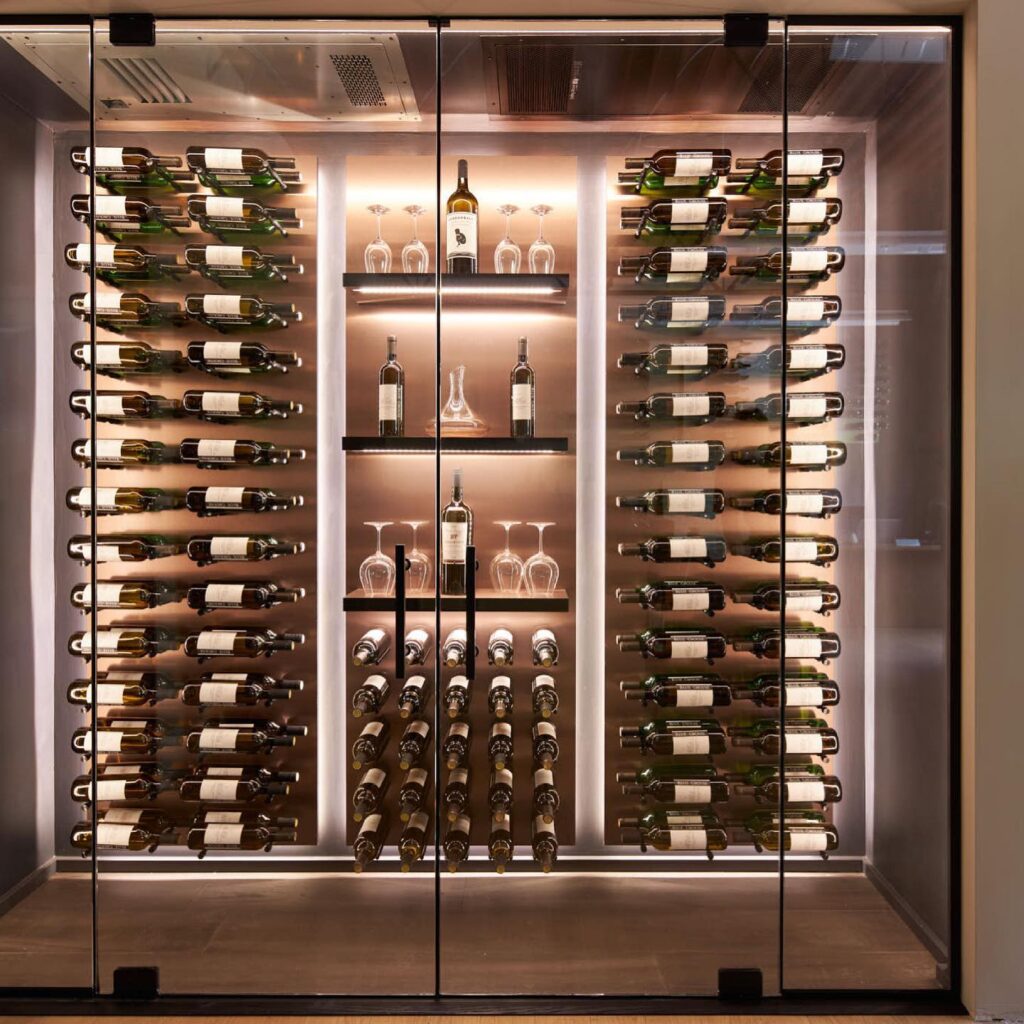Glass wine cellars have become a standout feature in modern interior design—merging elegance, visibility, and storage into one striking showcase. But while the appeal is undeniable, glass presents unique challenges when it comes to proper wine storage.
Before you move forward with a glass wine cellar project, it’s crucial to understand the technical requirements that come with using glass as a construction material in a climate-controlled environment.
Why Glass Wine Cellars Are So Popular
From luxury homes to high-end restaurants, glass wine cellars are becoming a staple of sophisticated design. Their transparency highlights beautiful wine collections while making the cellar a design focal point. But behind the sleek aesthetics lies one critical challenge: glass is a poor insulator.
Unlike insulated walls, glass does little to prevent heat transfer, which can impact temperature stability and the energy efficiency of your wine cooling system.
Key Considerations for Building a Glass Wine Cellar
1. Avoid Direct Sunlight
UV exposure not only damages wine but also causes heat buildup inside a glass enclosure. Always install glass wine cellars in shaded areas away from direct sunlight to reduce thermal stress.
2. Understand R-Values
The insulation value of a material is measured by its R-value. A standard insulated interior wall typically has an R-value of 13. In contrast:
Single-pane glass: R-value of 0.9 (very poor insulation)
Double-pane glass: R-value of 2 (better, but still below recommended)
To compensate, oversize your cooling unit by 2–3x the standard BTU load if you’re using glass.
3. Choose the Right Glass Type
Single-pane: Most affordable, but provides minimal insulation and risks condensation.
Double-pane (Insulated glass): Offers better thermal resistance and energy efficiency.
Regardless of the glass type, an oversized cooling unit is non-negotiable.
4. Framed vs. Frameless Design
Frameless glass delivers a sleek, seamless look but requires precision installation to avoid air gaps that could compromise temperature control.
Framed glass can incorporate thermally broken frames to reduce heat transfer—ideal for long-term efficiency. Call us today at 800-323-3130 to get a Custom Glass Wine Enclosure.
Cooling Systems: Bigger Is Better
For glass wine cellars, size truly matters—especially when it comes to the cooling unit. We recommend fully ducted systems to minimize noise and increase air circulation, and cooling units that are 2 to 3 times more powerful than those used in traditional cellars.
Also, never direct cold air at the glass walls—this increases the chance of condensation. Placement matters.
Maintenance Tips for Longevity
Seal Check: Regularly inspect the seals and gaskets to prevent air and moisture leaks.
Glass Care: Monitor for chips, cracks, or scratches and repair promptly.
Cooling System Service: Schedule annual maintenance for consistent performance.
Final Thoughts
Glass wine cellars are visually stunning, but they demand careful planning and technical expertise. From choosing the right type of glass to selecting and sizing the cooling unit, every decision impacts performance and preservation.
At Cool Wine Cellar, we specialize in designing and equipping glass wine cellars with the proper systems to ensure both beauty and function. Ready to get started?
👉 Contact us today for a Custom Glass Wine Enclosure.

